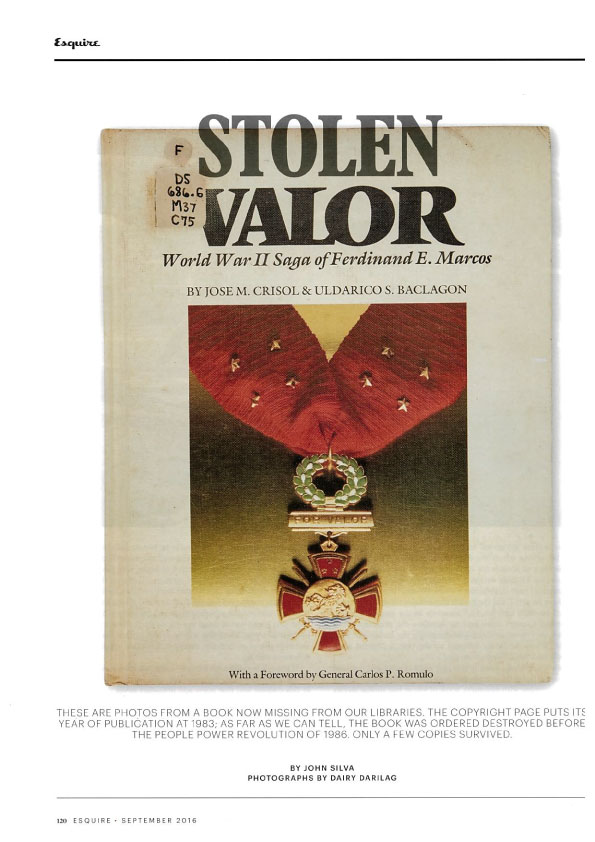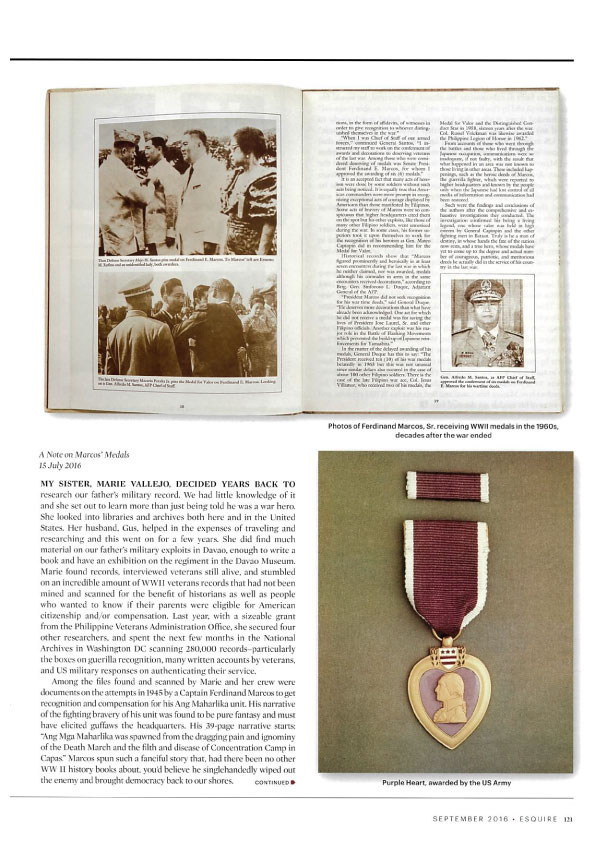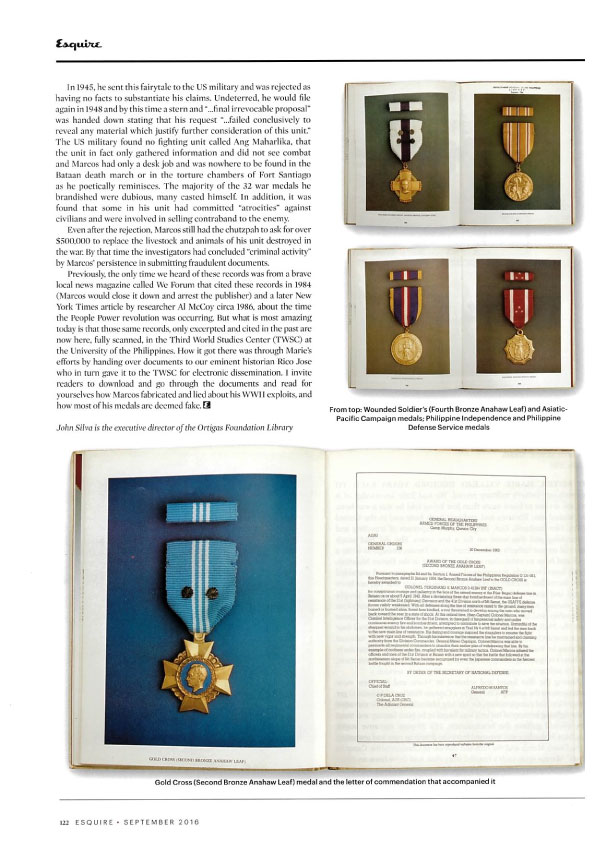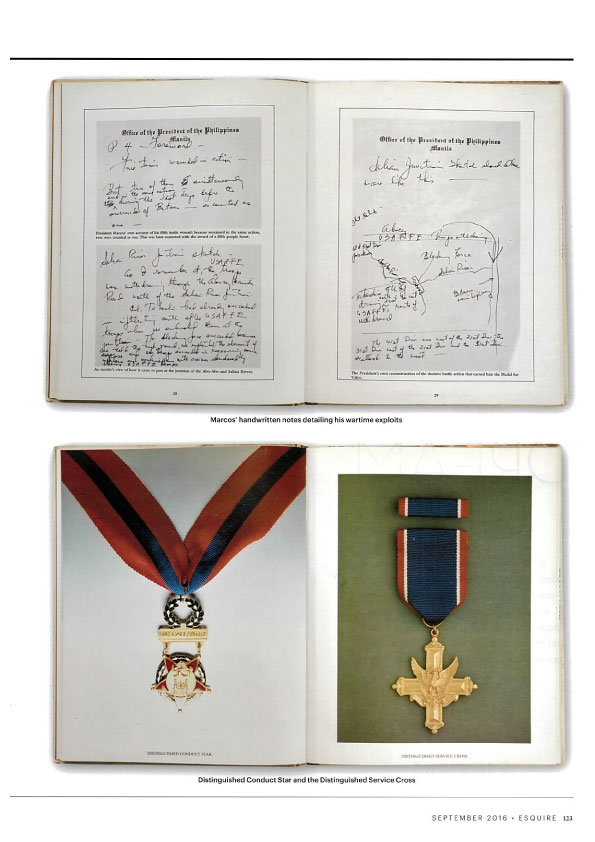A Note on Marcos' Medals
15 July 2016
My Sister, Marie Vallejo, decided years back to research our father's military record. We had little knowledge of it and she set out to learn more than just being told he was a war hero. She looked into libraries and archives both here and in the United States. Her husband, Gus, helped in the expenses of traveling and researching and this went on for a few years. She did find much material on our father's military exploits in Davao, enough to write a book and have an exhibition on the regiment in the Davao Museum. Marie found records, interviewed veterans still alive, and stumbled on an incredible amount of WWII veterans records that had not been mined and scanned for the benefit of the historians as well as people who wanted to know if their parents were eligible for American citizenship and/or compensation. Last year, with a sizeable grant from the Philippine Veterans Administration Office, she secured four other researchers and spent the next few months in the National Archives in Washington DC scanning 280,000 records-particularly the boxes on guerrilla recognition, many written accounts by veterans, and US military responses on authenticating their service.


Among the files found and scanned by Marie and her crew were documents on the attempts in 1945 by a Captain Ferdinand Marcos to get recognition and compensation for his Ang Maharlika unit. His narrative of the fighting bravery of his unit was found to be pure fantasy and must have elicited guffaws from the headquarters. His 39-page narrative starts:
"Ang Mga Maharlika was spawned from the dragging pain and ignominy of the Death March and the filth and disease of Concentration Camp in Capas." Marcos spun such a fanciful story that, had there been no other WWII history books about, you'd believe he singlehandedly wiped out the enemy and brought democracy back to our shores.
In 1945, he sent this fairytale to the US military and was rejected as having no facts to substantiate his claims. Undeterred, he would file again in 1948 and by this time a stern and "...final irrevocable proposal" was handed down stating that his request "...failed conclusively to reveal any material which justifies further consideration of this unit." The US military found no fighting unit called Ang Maharlika, that the unit in fact only gathered information and his not see combat and Marcos had only a desk job and was nowhere to be found in the Bataan death march or in the torture chambers of Fort Santiago as he poetically reminisces. The majority of the 32 war medals he brandished were dubious, many casted himself. In addition, it was found that some in his unit had committed "atrocities" against civilians and were involved in selling contraband to the enemy.


Even after the rejection, Marcos still had the chutzpah to ask for over $500,000 to replace the livestock and animals of his unit destroyed in the war. By that time the investigator had concluded "criminal activity" by Marcos' persistence in submitting fraudulent documents.
Previously, the only time we heard of these records was from a brave local news magazine called We Forum that cited these records in 1984 (Marcos would close it down and arrest the publisher) and a later New York Times article by researcher Al McCoy circa 1986, about the time the People Power revolution was occurring. But what is most amazing today is that those same records, only excerpted and cited in the past are now here, fully scanned, in the Third World Studies Center (TWSC) at the University of the Philippines. How it got there was through Marie's efforts by handing over documents to our eminent historian Rico Jose who in turn gave it to the TWSC for electronic dissemination.
I invite readers to download and go through the documents and read for yourselves how Marcos fabricated and lied about his WWII exploits, and how most of his medals are deemed fake.
John Silva is the executive director of the Ortigas Foundation Library
